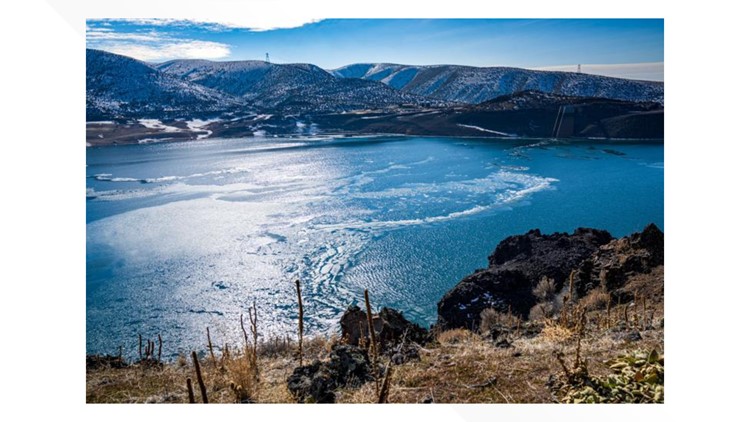BOISE, Idaho —
This story originally appeared in the Idaho Press.
Recreation enthusiasts are predicted to get more time than originally forecasted to enjoy Lucky Peak, Cascade, and Deadwood reservoirs this year before they are drawn down to meet irrigation demand.
Thanks to a cold, wet spring, Lucky Peak is forecast to reach 70% to 75% capacity this summer, said Mike Meyers, watermaster for Water District 63, which takes direction from the Idaho Department of Water Resources. This translates to two extra weeks to enjoy boating and other water sports before additional water from the reservoir will need to start being released for irrigation purposes, pushing the drawdown date to mid-July, he said.
In a normal water year, releasing water for irrigation purposes, also referred to as draw down, would typically occur at Lucky Peak in mid-August, Meyers said. Though the unexpected spring precipitation is not enough to allow for draw down then, it is likely to help extend the reservoir’s time at peak capacity for the season, he said.
The additional spring precipitation also means irrigation customers are forecast to have water for a bit longer than originally forecasted, Meyers said. On April 1, as irrigation season approached, conditions were looking “very, very dire,” with irrigation water allocations predicted to be low and shutoffs predicted for July, Meyers said. In a normal water year, irrigation shutoffs would happen in October.
But recent precipitation has added to the snowpack, with irrigation water forecast to last into August or September, he said.
“It still doesn’t look great, but at least we’re getting through that August, September range,” he said.
Cascade and Deadwood reservoirs, which are part of the Payette River System, have benefitted from the wetter spring, too, said Ryan Hedrick, Middle Snake water operations lead with the Bureau of Reclamation. Cascade is forecast to fill this year, and Deadwood is forecast to nearly fill, he said.
“We were worried we were coming into a back-to-back dry year” given how little water was leftover in both Cascade and Deadwood last fall, Hedrick said. “This wet, cold spring really helped us to get out of that.” However, irrigation customers will still need to be mindful of their usage, he said.
Despite the added precipitation, Meyers and Hedrick agreed that whether or not the reservoirs fill to their forecast levels still depends on the weather in the next few months.
“We don’t want 90-plus degrees for temperatures in June,” Meyers said. “We don’t want those big hot spikes because that’ll make the melt happen faster. We’ll lose a lot to evaporation … and we’ll lose a lot to seepage in the ground because the ground will dry out faster,” he said. Average temperatures would be preferred, he said.
Last year, Southwest Idaho saw record numbers of 90-plus degree days, as previously reported.
Heading into the summer, recreational visitors should still expect to see some beached boat ramps, Meyers and Hedrick said. Visitors should also be aware of draw down schedules at each reservoir, which could make boats vulnerable to beaching or getting stuck.
“One piece of advice I give to boaters is don’t leave your boat on the side of the bank, especially in about a month when we really start to draw down Lucky Peak, because it could get stranded there,” Meyers said.
Last summer, one visitor left their boat on the bank of the reservoir to go camping, but when they returned, it had become beached as water levels fell, Meyers said.
Water levels just rose high enough in the past few weeks for that person to retrieve their boat, Hedrick said.
At Lucky Peak, draw down is predicted to need to begin in mid-July to continue to meet the needs of water users downstream, Meyers said. Visitors should keep a close eye on water levels when drawdown begins to ensure their boats are not stranded on dry land, he said.
Overall, though the picture has improved some, Lucky Peak boaters will still see a shortened recreation season overall, Meyers said.
“It’s going to be better than what we thought, but it’s still not a great year for recreation either,” Meyers said.
Similarly, Cascade Reservoir is a relatively shallow water body and contains a number of sandbars that can entrap boats, Hedrick said. Paying attention to flows and drawdowns there will help boaters avoid trouble, he said.
This story originally appeared in the Idaho Press. Read more at IdahoPress.com
Watch more Local News:
See the latest news from around the Treasure Valley and the Gem State in our YouTube playlist:



